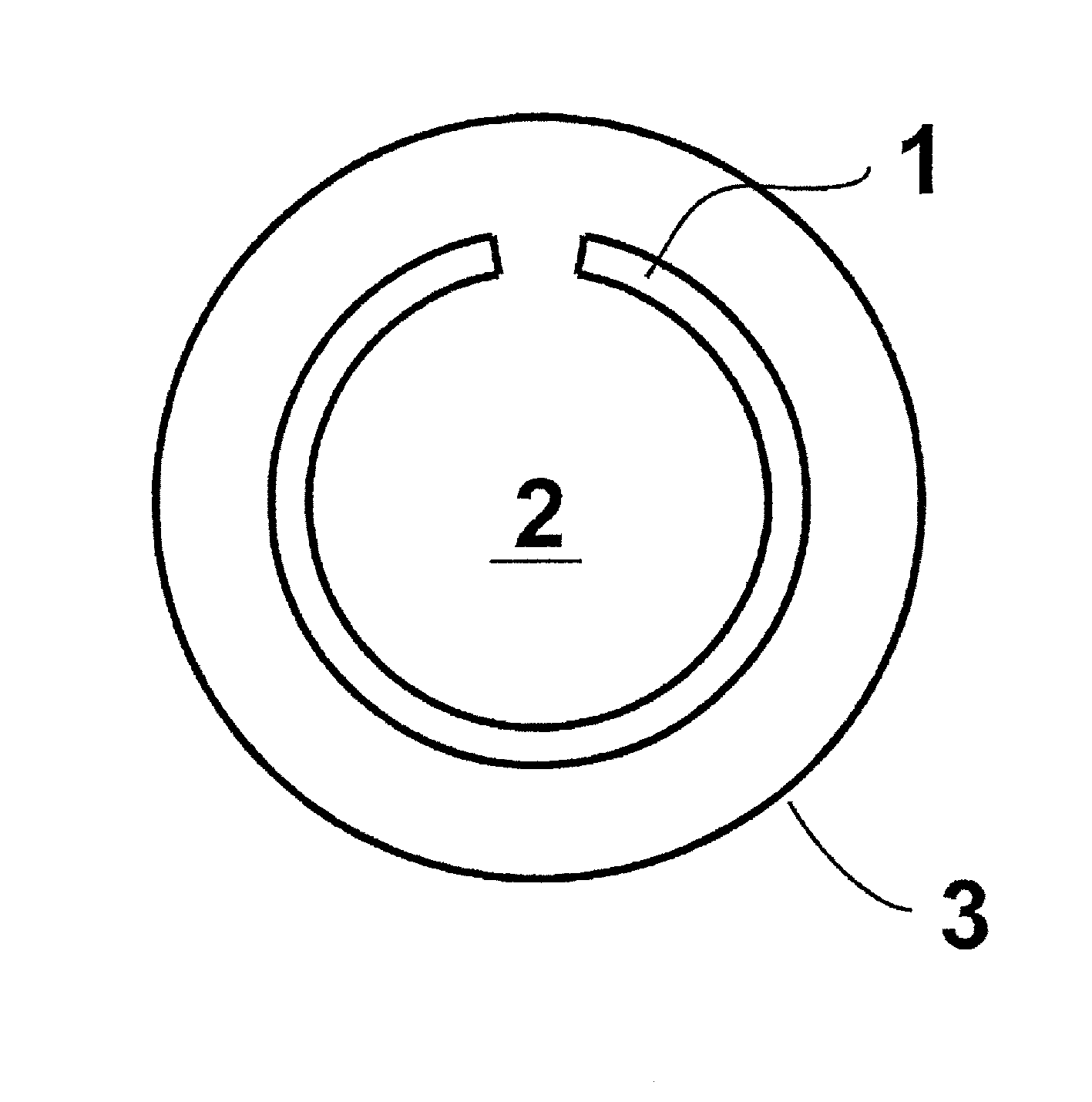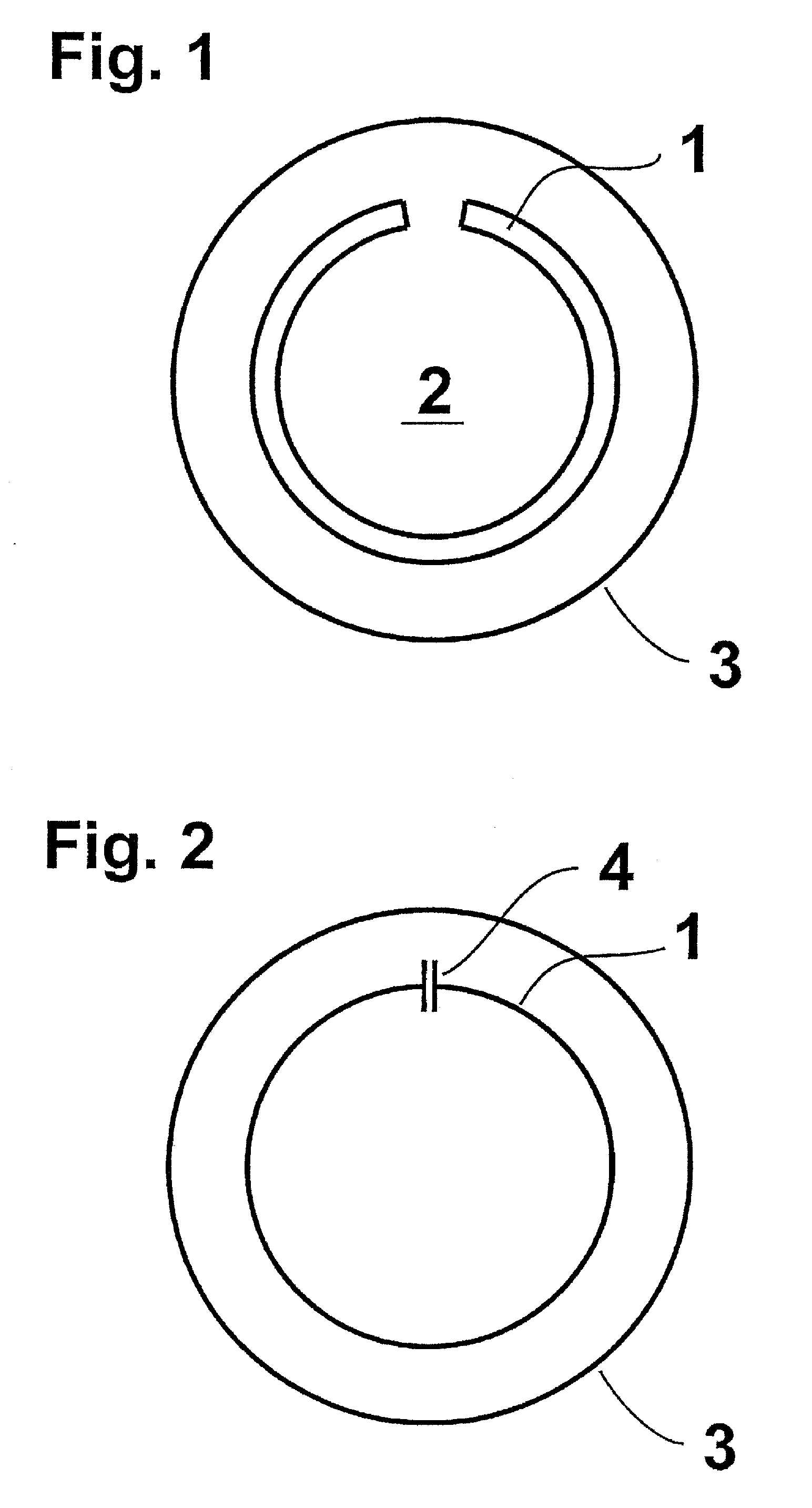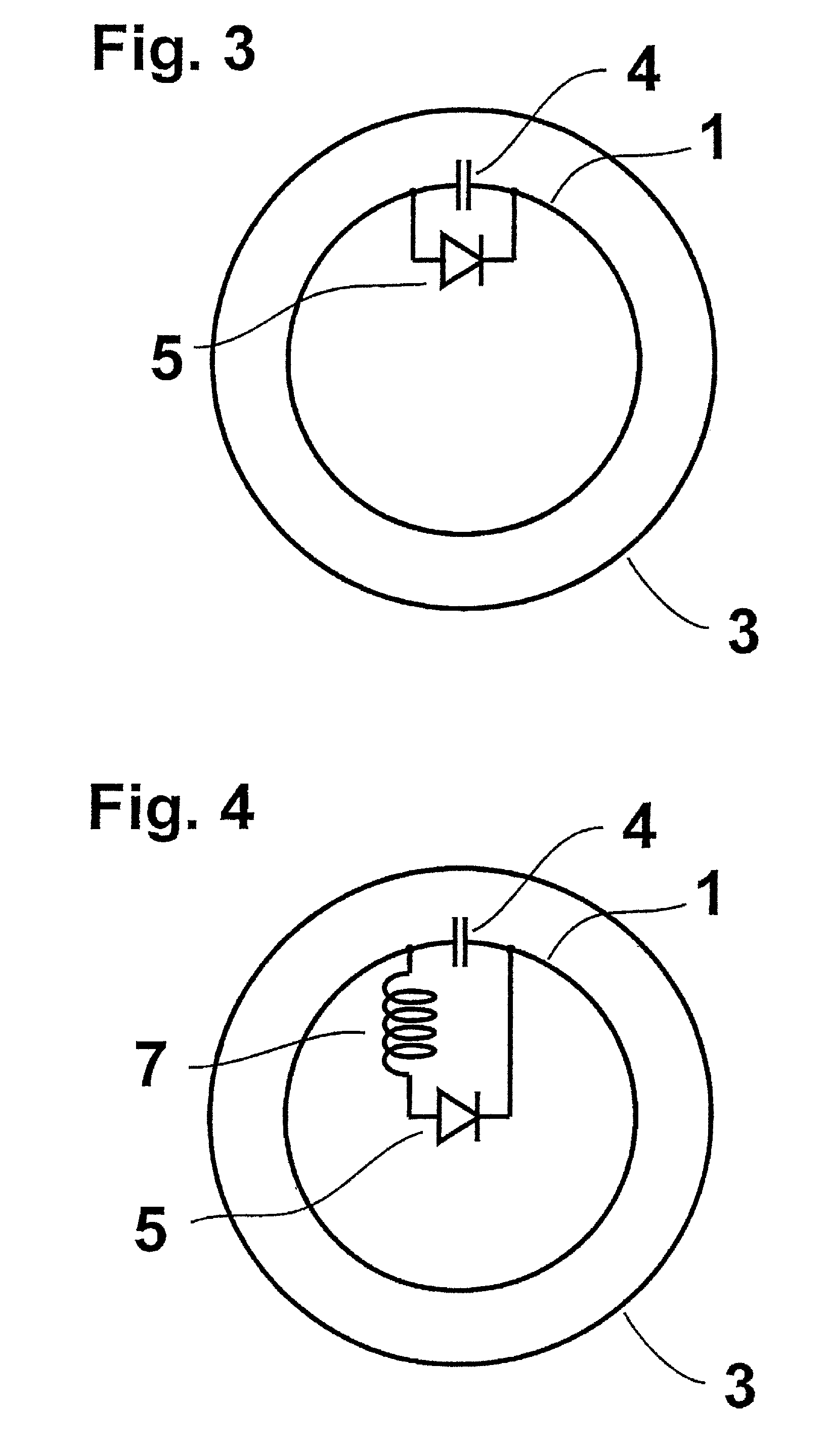Coil array for magnetic resonance imaging with reduced coupling between adjacent coils
a magnetic resonance imaging and adjacent coil technology, applied in the field of imaging devices, can solve the problems that the whether during transmission or reception, cannot be excluded, and the mutual influence and coupling between adjacent coils cannot be excluded, so as to improve the resolution capability
- Summary
- Abstract
- Description
- Claims
- Application Information
AI Technical Summary
Benefits of technology
Problems solved by technology
Method used
Image
Examples
Embodiment Construction
[0011]The mode of operation is as follows:
[0012]In a manner known per se, the coil transmits and / or receives the corresponding radio frequencies essentially perpendicular to the area described by the coil. The surrounding and closed conductor that is additionally applied acts as a shield against both electrical and magnetic fields. The surrounding electrical fields terminate at the conductor, which wards off electrical fields in the manner of a Faraday's cage. The impingement of the magnetic alternating fields additionally effects the development of eddy currents, which, according to Lenz's law, are opposite in direction to the magnetic current generating the eddy currents and thus contribute compensating them. As a result, there follows both electrical and magnetic shielding.
[0013]By virtue of the arrangement of the conductor in the area of the coil, a shielding essentially in this direction is effected, so that the transmission and / or reception of signals, which are emitted and / or...
PUM
 Login to View More
Login to View More Abstract
Description
Claims
Application Information
 Login to View More
Login to View More - R&D
- Intellectual Property
- Life Sciences
- Materials
- Tech Scout
- Unparalleled Data Quality
- Higher Quality Content
- 60% Fewer Hallucinations
Browse by: Latest US Patents, China's latest patents, Technical Efficacy Thesaurus, Application Domain, Technology Topic, Popular Technical Reports.
© 2025 PatSnap. All rights reserved.Legal|Privacy policy|Modern Slavery Act Transparency Statement|Sitemap|About US| Contact US: help@patsnap.com



